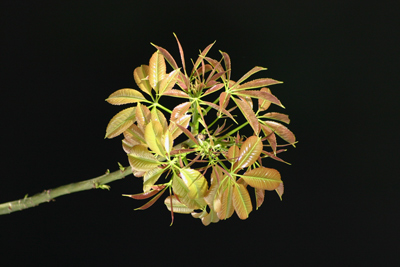
[Below is an amalgam of various posts published under the old version of Line of Sight in 2007 & 2008. This tree is usually a big topic of conversation in January & February when it blooms, much like the jacarandá in November. Plan your visits accordingly! ]
I’ve written about my arch-nemesis before, the beautiful yet dangerous palo borracho. Dangerous for me anyway. Native to Argentina, this gorgeous tree triggers allergies I never knew about. In fact, I never had any kind of botanical allergy before moving to Buenos Aires. So now that the palo borracho has been blooming for a couple weeks, it’s starting to get to me. Red eyes, sneezing, congestion, the works.
The life cycle of the palo borracho –a.k.a. the silk floss tree or Chorisia speciosa— is just as interesting as its blooms are beautiful. When coldest weather disappears, leaves sprout to announce the arrival of spring in September. Newcomers have a reddish hue which disappears as they mature:

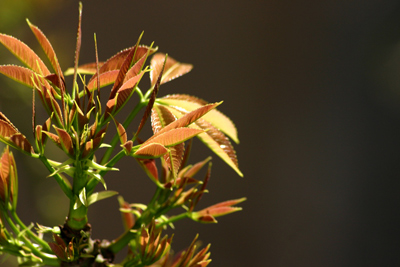
By the end of November, a few enormous pods hang from upper branches. As weeks go by, the pods crack & break off in pieces to expose a puffy bundle of seeds. Each seed has a wispy, cotton-ish tail ready to be caught in the wind:
Newer branches protect themselves with incredibly sharp spikes. Ouch:
January brings a lot of buds which eventually sprout in groups of long, pink petals:
Those petals open into gigantic flowers in February. Bees & other insects love this time of year… I don’t. Find the spider on the second photo below. Mild Januarys trick trees into blooming early, much to my delight:
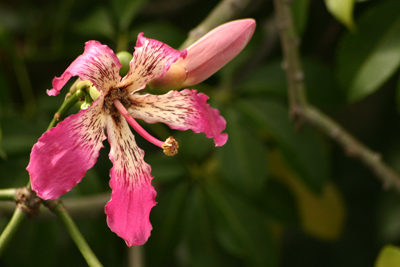
As trees get older, they tend to grow at an angle instead of straight up. The base of the tree bulges with stretch marks as it absorbs more & more water, hence its name… talk about drought resistant! The trunk also loses its lower spikes. The tree’s pronounced green color means high chlorophyll content & photosynthesis even without leaves when winter returns. Trunks eventually grey with age:
A variety of the same tree, Chorisia insignis, has stunning white/yellowish flowers instead of pink. Not nearly as common in Buenos Aires, they look all the more striking because of their comparative rarity. This example is from Plaza Colombia in Barracas:
It’s an amazing tree, so why do I have to be allergic to it?? Grrr…
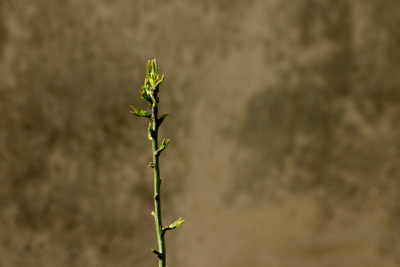
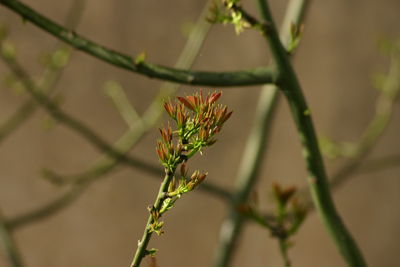
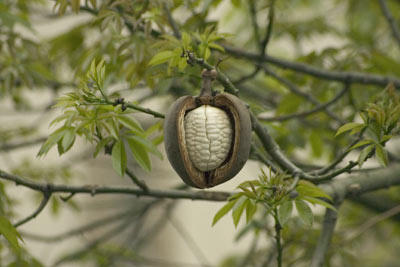
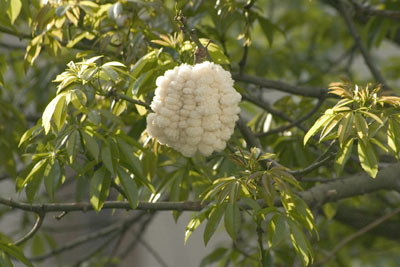
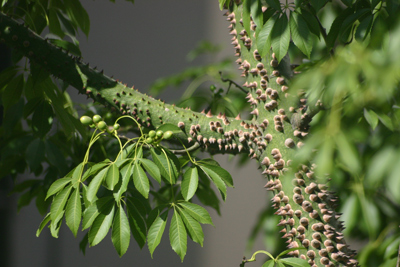
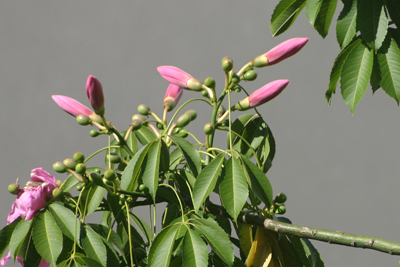
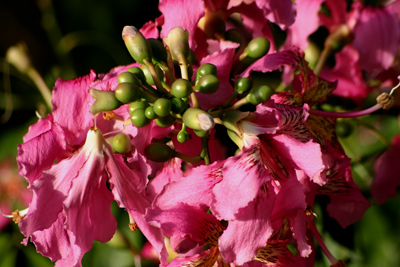
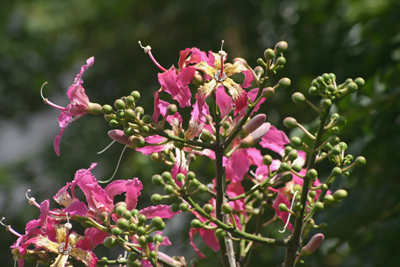
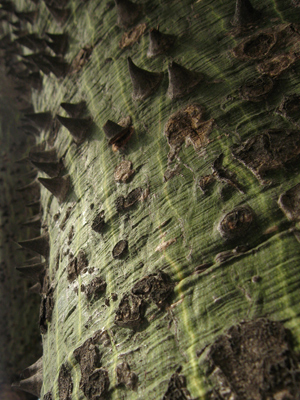
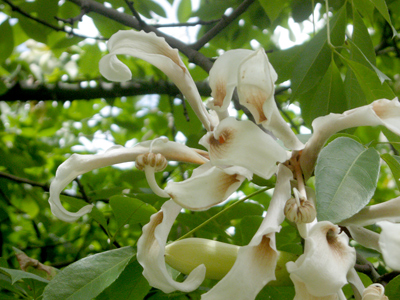
Nice photos, Robert…Here at Valencia, Spain, lots of them at old Turia course…
Thanks, Jorge! There are a couple inside the Alcázar in Sevilla, but I haven’t seen many others in Spain. I know of one in Lisboa too 🙂 Bet they look great in Valencia. I haven’t been there since 2000… I know it has changed a LOT.
Great write up! I was thinking about doing one, now I can just reference yours! 😀
Sorry to hear about your allergies to these beautiful trees. I have a mini one growing on my terrace with a small trunk and small leaves, but no flowers. I inherited it from the previous owner and I believe that it is quite old, but had been root-bound for so long that it never got a chance to stretch. I repotted it into a slightly larger pot, but don’t want to let it get any bigger. They belong in the ground, not on the roof.
Thanks, Beatrice! It was easy to get photos all year round because I had three trees outside my balcony. Goegeous. I really love this tree in spite of my allergies… each year just a touch worse. I went to the hospital a few years ago for some quick relief.
While reading up about the palo borracho, I came across a website that talked about using them for bonsai. Incredible… seems almost cruel since they can grow so large. I guess when they’re that small, they don’t flower. Saludos!
Great photos & information on “palo borracho’s flowering cycle, Robert. Are they also referred to as “bombax tree” & do they grow in Hawaii or Mexico?
In my recent visit to Buenos Aires I was delighted by their beauty & profusion of flowers which I will incorporate into my artwork.
Hi, Jane. I’d never heard of the Bombax tree until now, but after seeing the flowers in Wikipedia it doesn’t seem like it is the same. They would grow anywhere with a similar climate to Buenos Aires… for example, I’ve seen palo borrachos in Sevilla in the patio of the Alcázar. Remarkable trees though & definitely artworthy!